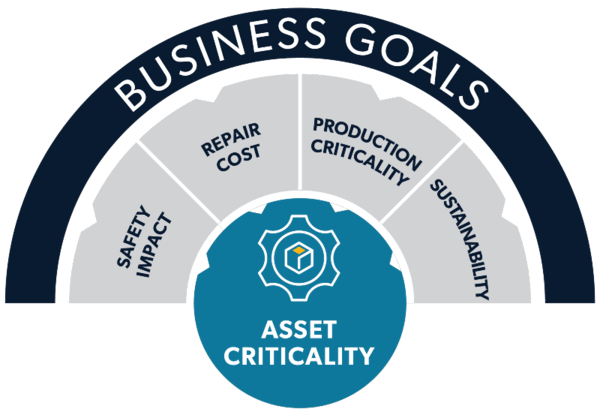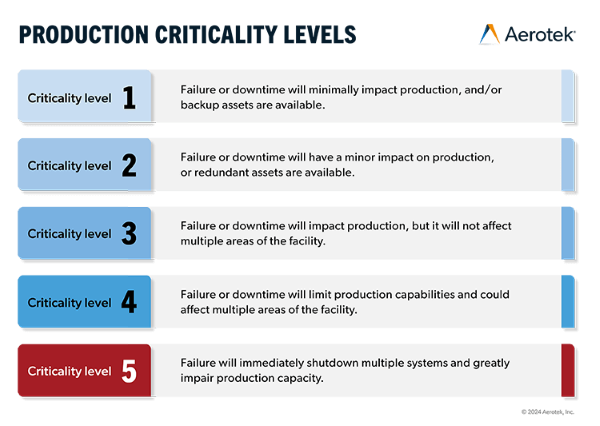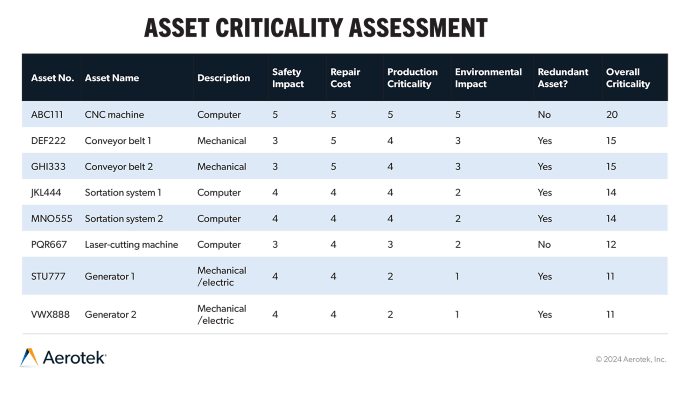Asset Criticality Assessment: A Preventive Maintenance Must-Have
Conducting an asset criticality assessment is a non-negotiable first step in running an effective preventive maintenance program that avoids production halts and safety hazards.
This article shares important considerations for defining your critical assets and performing an asset criticality assessment to take your maintenance program to the next level.
Is Your Maintenance Program Actually Preventive?
The idea of fixing machines before they break revolutionized manufacturing and supply chains beginning in the early 1900s when Henry Ford used it extensively to manage his Model T factories.
There’s no question that preventive maintenance is effective, but shifting from reactive to preventive is not easy. In fact, many companies that believe they’re operating preventively are not — even though it’s become easier than ever to anticipate machine failure.
Our ability to capture data offers nearly infinite opportunities to screen for issues, making preventive maintenance an approach that's deceptively within reach. When put into practice however, it either becomes overwhelming to manage, or it's not executed properly to begin with.
The challenge comes when organizations fail to prioritize what to maintain, how to maintain and how often to maintain.
Without defining these parameters, it’s nearly impossible to run a reliable maintenance program — no matter how many preventive maintenance best practices you follow.
Your first step in prioritizing your maintenance efforts is to conduct an asset criticality assessment. It will help you understand:
- How each asset fits into the greater picture of your operations
- How each asset contributes to production goals
- The relative risk to your organization when an asset goes down
- How to prioritize and manage your work orders
How to Define Asset Criticality
One of the main reasons site leaders fail to delineate asset criticality frameworks is that they label every machine essential. When each machine costs millions of dollars to procure and thousands to repair, it’s easy to consider every asset a top priority.
The problem is that when every manufacturing, plant or warehouse asset is labeled essential, it becomes impossible to get a clear picture of the criticality of each asset (relative to your other assets) and prioritize your preventive maintenance efforts accordingly.
At the end of the day, if every asset is important, nothing is important. Therefore, there is no way to run an effective asset management or preventive maintenance program without a well-defined understanding of the relative risk of downtime or failure for each asset.
To avoid this common pitfall — that inevitably leads to reactive maintenance efforts — it’s important to consider these factors when defining the criticality of your assets:
- Safety impact
- Repair cost
- Production impact
- Sustainability
Your overarching business and performance goals should inform these variables, which can change from year to year, but they typically center on production and revenue drivers (as shown in the image below).
Performance-Centric Asset Criticality

Performance-centric asset criticality: Central business goals connect all preventive maintenance efforts and guide asset criticality assessments. This creates a cohesive program that unites business leaders, supervisors, planners and technicians by driving enterprise production and revenue goals.
Asset Criticality Beyond the Machine
As you conduct your asset criticality assessment (according to the factors outlined above), it should become clear that preventive maintenance and asset criticality aren’t just about the machines.
Your team is invested in protecting asset health for the purpose of supporting your primary business goals. When it comes to defining asset criticality, your objective is to determine which assets are most critical to meet those ends.
With this in mind, you should seek multiple perspectives to inform your asset criticality assessment.
From your customers, to site leadership and technicians, each person sees a different part of the bigger picture and can share important information. This insight will help you determine the asset criticality factors you’re going to measure and define each level of criticality (usually on a scale of 1–5).
Here’s an example of how site leaders can define the production criticality levels of their assets:

Production criticality levels: Defining, documenting and sharing a scoring system across your team will help you rank your assets and prioritize work order scheduling, which is a cornerstone of a truly preventive maintenance program.
Redundancy = De-prioritization
Clearly defining your asset criticality levels is essential to avoid running a reactive firefighting mission where everything needs to be done all at once. Most organizations define more than 50% of their assets as critical, which is not realistic for assigning criticality levels and prioritizing maintenance efforts. Instead, determine your 20% most critical assets (i.e., criticality level 1), and assign lower priorities to the remaining 80%.
To get there, these two questions should guide your process and give structure to your asset criticality assessment:
- How would the failure of this asset affect production?
- What is the financial impact of the downtime of this asset?
Accordingly, it’s important to consider if you have multiple assets that perform the same functions.
While every piece of machinery might be important to your operations and production goals, you can safely de-prioritize the criticality of redundant assets.
If you have several machines that perform the same job, the failure of one of those machines is less likely to jeopardize your production and revenue goals.
Asset Criticality Assessment
Although the idea is more than a century old, preventive maintenance has become very popular in the past few years.
Novel IIoT and condition-based monitoring (CBM) systems have brought exciting advances to the maintenance field, making preventative maintenance “the thing” to do and talk about. However, it remains little more than a hot topic for organizations that fail to define their most critical assets.
Below is an example of an asset criticality assessment, you can use to avoid this reactive pitfall. Be sure to refine it based on your organizational goals and revise every 12 months or so as your goals and processes change.

Preventive Maintenance Mastery Starts Here
An asset criticality assessment is a must-have guide for your preventive maintenance efforts, which should go beyond anticipating machine failure.
A truly preventive program will help your team anticipate downtime and determine which machines need their attention first to avoid production halts, safety hazards and environmental impact. This encourages a targeted approach to maintenance planning and avoids the risk of falling back to reactive efforts.
Ready to start your asset criticality assessment? Our comprehensive maintenance experts can help. Contact us for a free consultation today.
